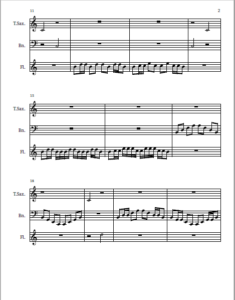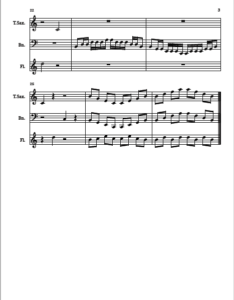Mathematical Mountains combines all of the aspects of mathematics that have been explore in this project. A fractal has been created out of a square wave where every eighth note following the first has been expanded to multiple notes. The number of notes is determined by Fibonacci’s sequence. When the second person begins playing, they are playing the same phrases but in modulo 4. And the third person who comes in is playing the phrase again, but with chaotic notes raised. The piece ends with the musicians playing in sync of a vertical flip of the beginning of the phrase.
Played by Liv Long
Music and math are the perfect combination because it allows logical people to see the beauty in music and the artist-minded people a chance of peaking into the wonders of math. More than that music helps in the learning of math at all ages. In children, music and math combined classes produced two results: the first group showed longer attention spans and focus while they began to grasp the concept, while the second group enjoyed the experienced as it reinforced the learning (McDonel 53). This just goes to show that the two go hand-in-hand and provide a great way for everyone to find something they enjoy while they learn.
Fractals, Chaos Theory, Fourier Series, Fibonacci’s Sequence, Modular Arithmetic, and Symmetries are mathematical topics that have stumped students for generations. I hope that in reading these explanations they have been made more clear. Math does not have to be scary, and music is not all fun and games.
Should you have any questions regarding the material or this project please feel free to reach out. My email is oclong@mail.roanoke.edu.
Welcome to Mathematical Compositions and Musical Calculations.



